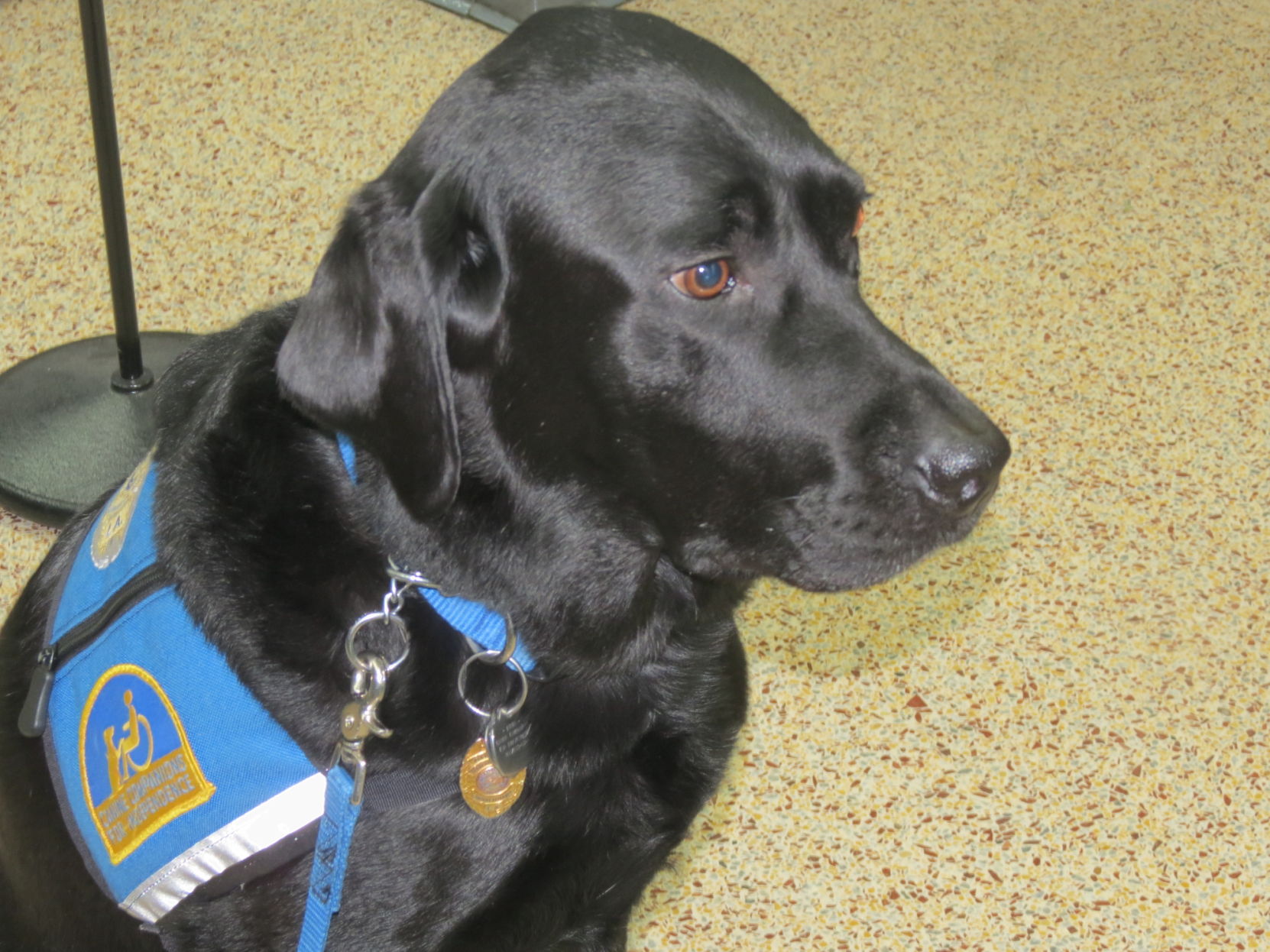
Dog makes mark with his silence
November 11, 2014Alleged Houma threat-maker gets ‘get-out-of-jail’ free card
November 11, 2014The use of a “facility dog” to calm a child witness in court is new for Terrebonne parish.
But use of such dogs in court is becoming more common nationwide, and experts on how animals fit into the world of law say more formal rules about what can and cannot be done in court with service animals are likely.
“If I was representing a client in a molestation case I would object by all means to a dog being anywhere in the courtroom,” one local attorney said in an interview.
John Ensminger, an attorney in Stone Ridge, New York, about 90 miles north of New York City, specializes in how the law and dogs relate.
He is not surprised that defense attorneys are leery about canine presence.
“An attorney might object on the grounds that people could think children don’t lie to dogs, and that is not necessarily established,” Ensminger said. “If it allows the child or perhaps an adult who is developmentally disabled, a victim, to speak, does it mean the victim is speaking the truth? There could be a feeling among jurors that the dog is assuring truth, as well as allowing the child to speak, and that is not necessarily the case.”
In many child sex cases attorneys have expressed concern that damning testimony is what the child perceives is being sought. A defense attorney could make the argument that a child may say something not true in order to be around the dog, Ensminger said.
“There are many of these cases where there have been objections and decisions,” Ensminger said. “But many of these cases do not lead to appellate decisions or opinions. It is not clear how much this is going on in courts, but it is increasing.”
“As an attorney who has developed a specialty in canine law I see the use of the dogs as a fantastic development,” Ensminger said. “But if I were a defense counsel I would take a different view.”
A defense attorney who suspected that a child could not testify without a dog, some attorneys said, could use that to blunt the prosecution’s case.
“If I am a prosecutor and I have a child who looks cuddly and it is in association with an innocent dog, who can’t possibly lie, and that plays on the sympathies of the jury, I am going to push that,” Ensminger said. “So yes, the presence of a dog is capable of biasing a jury or a trier of fact, if the case is being heard by a judge.”
The Animal Legal and Historical Center at Michigan State University’s College of Law notes, in an article done by Ensminger, that appeals courts in several states – Louisiana not among them – have made disparate rulings concerning service animals.
In a Connecticut case the appeals court ruled that while a judge has the discretionary authority to allow a service animal, doing so in a specific case was an abuse of that authority.
A showing should be made, the court ruled, that the use of the dog is very specifically needed under rules relating to “special procedures” in that jurisdiction.
California courts have been more friendly, however, and did not require such a showing.
Where courts have allowed victims to testify with dogs present, the actions taken in Terrebonne Parish Judge George Larke’s courtroom appear to have conformed with the most widely accepted practice.
Keeping the dog out of sight of the jury with no knowledge of its presence would appear to be the acceptable norm, although always subject to attack.
Duval, the Terrebonne Parish District Attorney’s Office dog, was requested to be present by a 6-year-old victim at the trial of her grandfather through marriage in an aggravated rape case.
Assistant District Attorney Bud Barnes, who successfully prosecuted Christopher Prosperie in the Terrebonne case, said that most of the parish’s courtrooms are designed in a way that would shield Duval from view of the jury.
“All except Division C, that is the one that will continue to be a challenge,” Barnes said, referring to the courtroom currently used by District Judge Timothy Ellender. When he retires at the end of the year that courtroom will be presided over by Judge David Arceneaux. The interior of the witness box ca be seen easily by the jury. And if Duval appears there, although a temporary board could be put in place, that is not seen as the best practice, a review of cases and interviews on the subject indicate. “We plan to ask that a change in the courtroom be made.”









